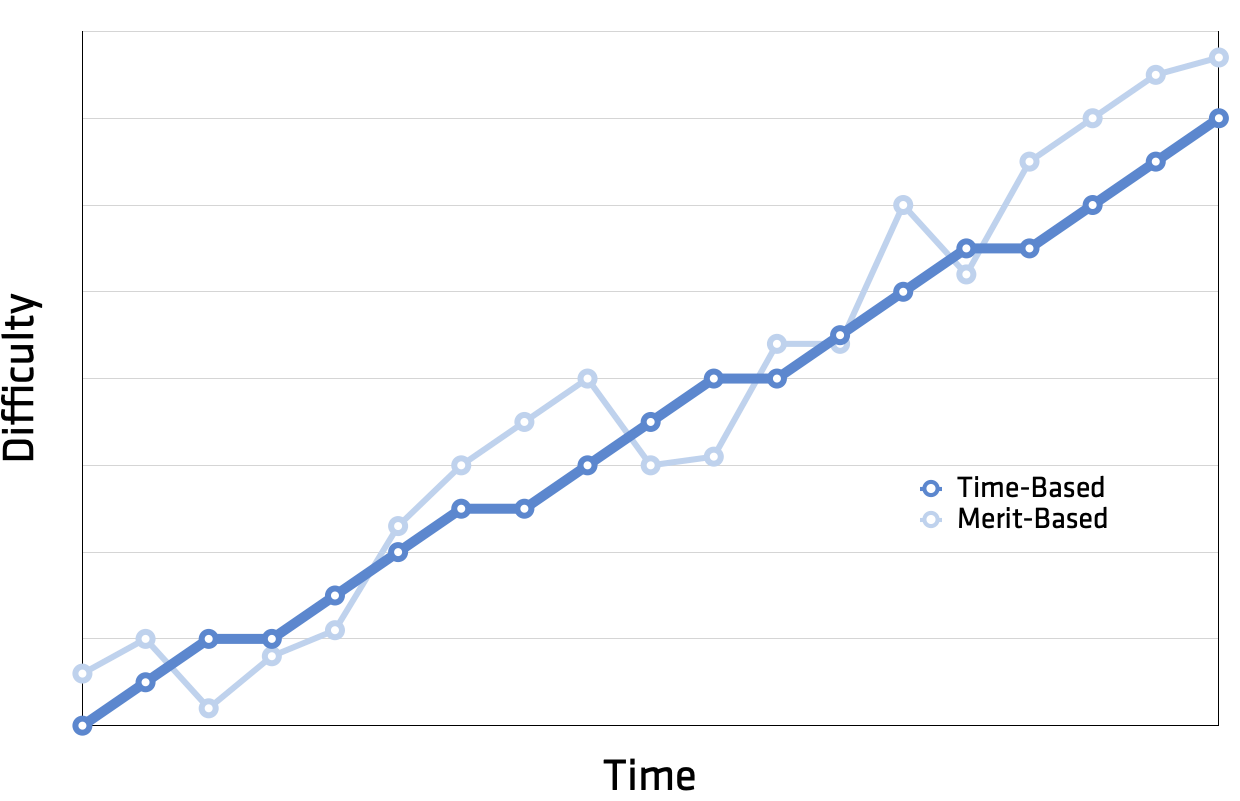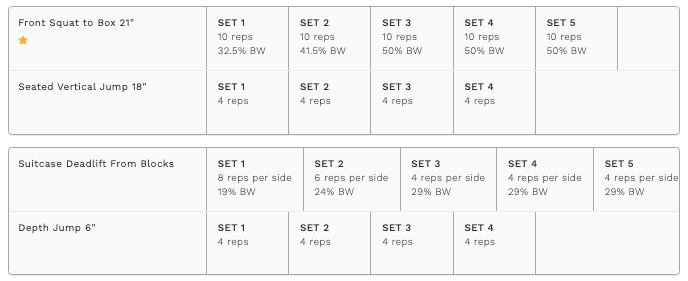Learn how training plans individually progress in the Sparta MOVE app based on your input.
The Short Version:
The Autoregulation feature is a unique feature that allows users to progress at their own rate. The planning system and plans that the Movement Health Platform (MHP) delivers to the Sparta MOVE App adapt and progress based on each individual's input, so what you get tomorrow depends on what you log today. Typical training plans are designed using "time-based" progression which ignores both natural and unexpected fluctuations in individual performance. The Autoregulation feature instead relies on user input to adjust and optimize each training session based on each individual's abilities and progression. The end goal of "progression" is the same, but this method not only allows each user to progress at their own rate but leads to better engagement, consistency, and ultimately better results!

Each plan can simply be thought of as having 12 different phases that progress in difficulty as the phases go up. In order to progress a phase, the individual must complete a specific difficulty or intensity in their Plan. As progression occurs, the volume (sets and reps), intensity (weight), and exercises themselves will adapt based on what the user completes. The 12 Phases are often thought of as 12 weeks, but the progression is typically not that fast. Users can (and will) spend multiple "weeks" in that same Phase as they continue to progress. The training plans can be thought of as smart-plans, that automatically adapt and adjust based on user input.
The Long Version:
The goal of progression is to “make progress”, and the keys to sustained progress are consistency and appropriate overload. Periodization is the term often used to describe the systematic planning of physical training to optimize sustained progression. Though there is a wide variety of periodization or planning models and philosophies, at the simplest level most experts agree and research supports the notion that physical training performed as part of an organized plan significantly outperforms physical training done at random. Planned (or "periodized") physical training is typically underpinned by the principle of progressive overload. The body improves physical qualities (strength, fitness, range of motion, etc) by adapting to the stress imposed during physical training. In order for the body to continue to adapt/respond to physical training, the demand or stress of the training must continue to progressively increase. Consistent overload gives the body a chance to adapt as quickly and efficiently as possible. This progressive overload can be accomplished in a variety of ways such as manipulating intensity (difficulty), volume (amount), and frequency of physical training. In summary, to improve physical qualities a planned approach of progressive overload is necessary and optimal.
So, the idea is to find the minimum necessary variation in load and movement to continually progress. As mentioned, there are a variety of planning models or philosophies utilized both in practice and in the literature. Regardless of the model (linear, undulating, concurrent) the plan that can be performed most consistently will typically lead to the best results. Consistency can be thought of as the "Cardinal Rule of Training."
The majority of planning or periodization models utilized in practice are what we would call "time-based" progressions. That is, the variations in load/movement are based purely on the passage of time: week 1: 70%, week 2: 75%, week 3: 80%, etc. These "time-based" progressions are based on a series of assumptions with one significant disadvantage being that they continue to progress regardless of what an individual actually does! So, for example, in week 1 if an individual was unable to perform 70% for any reason (eg, pain, fatigue), they would still progress to 75% in week 2. This progression is not optimal as it does not adapt to each individual. The planning feature instead utilizes "merit-based" progressions as part of an overarching autoregulatory approach to progression. In its most basic definition, meritocracy is a system in which the talented are chosen and moved ahead on the basis of their achievement or merit. This is a unique feature that allows users to progress at their own rate. The plans adapt and progress based on each individual's input, so what you get tomorrow depends on what you log today.
Using our example from above, if an individual is unable to perform 70% in week 1, then in the future they will continue to be prescribed 70% until they achieve that goal. This is the most basic example of a "merit-based" progression and how it differs from more common "time-based" progressions typically utilized. Below we can see a specific example within the MHP. The progression for each primary plan is currently based on a determined hinge movement, as designated with the yellow star below. The movement designated as the hinge is typically the movement with the greatest effect on an individual's lowest variable: for example, Load. In the example below, the user would need to complete all 5 sets of the Front Squat to Box 21" exercise at the prescribed intensity in order to progress to the next phase.

Each plan can simply be thought of as having 12 different phases that progress in difficulty as the phases go up. In order to progress a phase, the individual must complete a specific difficulty or intensity in their Plan. As progression occurs, the volume (sets and reps), intensity (weight), and exercises themselves will adapt based on what the user completes. The 12 Phases are often thought of as 12 weeks, but the progression is typically not that fast. Users can (and will) spend multiple "weeks" in that same Phase as they continue to progress. The training plans can be thought of as smart-plans, that automatically adapt and adjust based on user input.
As we know, true progression doesn't occur in a simple straight line. A "merit-based" or autoregulatory plan is much more adaptable and realistic for each individual. One of the most powerful aspects of a merit-based system is that it also increases engagement. When individuals know they have to reach a certain goal to progress they become more engaged which leads to more improved consistency. The end goal of "progression" is the same, but this method not only allows each user to progress at their own rate but leads to better engagement, consistency, and ultimately better results!
Autoregulation is the term used for the overarching concept of how the plans progress within the MHP. There is significant support for the use of autoregulation in progressing training plans from the literature and in practice. There are a variety of methodologies used (RPE, RIR, Estimated RM, VBT), however, many are impractical and time-intensitive. The planning feature uses Autoregulation to automate calculations and progressions so that training difficulty and variation are optimized for each unique user.
